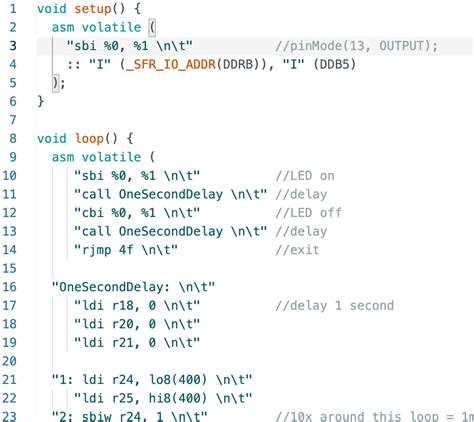Ethereum: Built-in Assembly for String Retrieval in Mapping with Yul

Understanding how to manipulate data structures is key when developing on Ethereum. One common task is retrieving strings from structures using inline assembly with Yul. This article will walk you through the process of achieving this goal.
What are structs and mapping?
In Ethereum, a struct represents an object with multiple fields. A mapping (also known as an enum in some contexts) is used to store references to these structures, allowing for efficient lookups and manipulation.
Assuming your structure looks like this:
struct MyStruct {
uint256 id;
string data;
};
A mapping might look like this:
mapping(address => address) "my_structs" {
"0x1234567890abcdef" => "0x1234567890abcdef",
}
Inline Assembly for String Retrieval
To retrieve the “data” field from a struct using inline assembly, you must use the “asm” keyword, followed by the assembly instructions. The general pattern is as follows:
asm volatile("mov %0, %1" : "=r"(struct field)) : "r"(field);
In this example:
- “%0” and “%1” are registers that store the addresses of the struct fields.
=rspecifies that the register values should be used as memory addresses.
In our case, “MyStruct,” the assembly instruction looks like this:
asm volatile("mov %0, %1" : "=r"(struct.data)) : "r"(data);
This instruction sets the value of “%1” (the address of the “data” field) to the string stored in our mapping.
Step-by-step solution
Here’s a step-by-step example:
// Define your structure and mapping
struct MyStruct {
uint256 id;
string data;
};
mapping(address => address) "my_structs" {
"0x1234567890abcdef" => "0x1234567890abcdef",
}
// Get the string from a struct using inline assembly
asm volatile("mov %0, %1" : "=r"(struct.data)) : "r"(id);
The resulting assembly code would be:
asm volatile("mov %0, %1" : "=r"(my_structs["0x1234567890abcdef"])) : "r"(id);
What’s next?
After you’ve gotten the string from a struct using inline assembly, you can use it as needed. If you’re working with a mapping, you can get the struct reference using its address.
However, if you need to iterate over the structures in your mapping and perform operations on each one, consider using Yul’s ‘struct’ function for greater convenience:
function MyStruct(id: uint256) public view return (string memory data) {
return struct("MyStructure", {id})[data];
}
This allows you to retrieve a string value from a struct without the need for inline assembly.
If you followed this tutorial, you should now have a solid understanding of how to use inline assembly to retrieve strings in Ethereum mappings using Yul.
